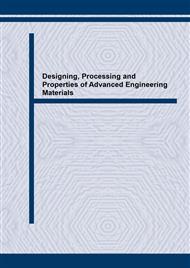p.369
p.373
p.377
p.381
p.385
p.389
p.393
p.397
p.401
Characteristics of the Compound Layer on the SCM 435 Steel Produced by Plasma Nitrocarburizing
Abstract:
Plasma nitrocarburizing treatment was performed for SCM 435 steel by using a pulsed plasma ion nitriding system. The effects of the variation of nitrogen and methan contents upon the hardened layer were investigated. Both the thickness of the compound layer and the amount of ε phase in the compound layer increased with nitrogen content. For an atmosphere containing 90% N2 gas content in the gas mixture, the thickness of the compound layer decreased due to the reduction of the number of nitrogen ion and slow diffusion of nitrogen atoms. The relative amount of ε phase in the compound layer increased with CH4 gas content up to 2%. For CH4 gas content over 2% in the gas mixture, the thickness of the compound layer decreased with CH4 content due to the formation of θ-Fe3C phase.
Info:
Periodical:
Pages:
385-388
Citation:
Online since:
March 2004
Authors:
Keywords:
Price:
Сopyright:
© 2004 Trans Tech Publications Ltd. All Rights Reserved
Share:
Citation:


